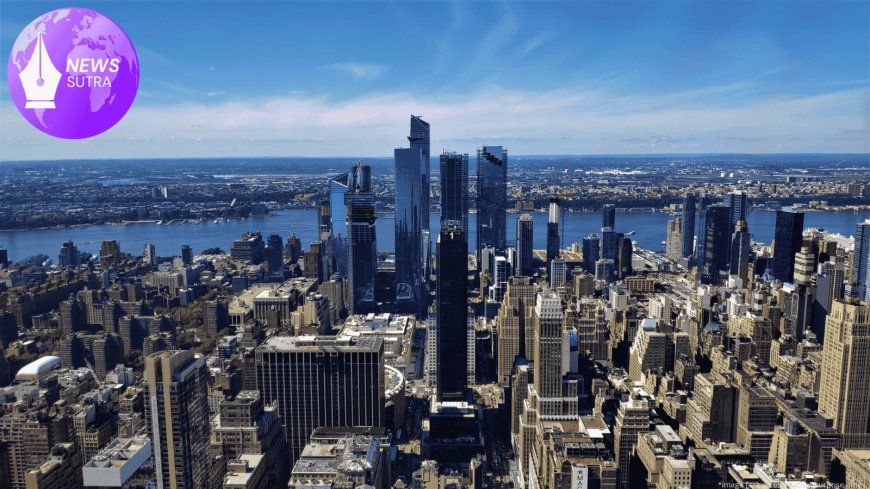America’s Quiet Exodus: The Real Reasons Families and Small Businesses Are Leaving Blue States for Red States
Discover why families and small business owners are leaving blue states for red ones in record numbers. Taxes, safety, and freedom are driving a quiet American migration.

An under-the-radar demographic shift is reshaping the American map—families, retirees, and entrepreneurs are increasingly moving out of traditionally blue states like California, New York, and Illinois and resettling in red states such as Texas, Florida, Tennessee, and Idaho. While the U.S. Census provides broad strokes, the real reasons behind this migration lie deeper: taxes, public safety, cost of living, and a growing desire for personal and economic freedom.
What once felt like fringe anecdotes have now become an undeniable trend. This is America’s Quiet Exodus—and it’s accelerating.
1. The Numbers: What the Data Tells Us
According to the latest data from the U.S. Census Bureau, more than 800,000 people left California in the last two years alone. New York saw a population decline of over 500,000 between 2020 and 2024. Meanwhile, Florida gained nearly 700,000 residents, and Texas welcomed close to 600,000 new arrivals during the same period.
These aren’t just retirees moving south for sunshine. Young families, tech workers, and small business owners are driving the trend.
In a report by U-Haul, Texas ranked #1 for inbound moves in 2023, followed closely by Florida and the Carolinas. The top outbound states? California, Illinois, and New Jersey.
2. Tax Burden: One of the Biggest Push Factors
One of the clearest divides between red and blue states lies in tax policy.
-
California has a top state income tax rate of 13.3%, the highest in the nation.
-
New York follows close behind with 10.9% for high earners.
-
In contrast, Florida, Texas, and Tennessee have no state income tax at all.
High property taxes, sales taxes, and fees have added to the frustration. Joe R., a small business owner from Long Island, shared:
“I paid over $20,000 a year just in property taxes. Add state income tax and business licensing fees—it became impossible to grow my business.”
Joe moved his family and business to Tennessee in 2023. “I cut my tax burden in half,” he said. “Now I’m hiring, not struggling.”
3. Cost of Living and Housing: A Tale of Two Markets
Housing affordability plays a massive role in this exodus.
According to a 2024 Redfin study, the median home price in San Francisco is $1.3 million, while in Austin, Texas, it’s roughly $470,000. A comparable three-bedroom home in Orlando, Florida, costs about $350,000—less than a third of what you'd pay in Los Angeles.
Renters aren’t spared either. In New York City, the average monthly rent for a one-bedroom apartment now exceeds $3,100. In contrast, a similar rental in Oklahoma City averages just over $1,000.
A young couple from Sacramento, now living in Jacksonville, Florida, told us:
“We were renting a 900 sq ft apartment for $2,500. Now, we have a mortgage on a 4-bedroom home and pay less monthly.”
4. Safety and Quality of Life
In many blue-state cities, rising crime has become a deal-breaker.
-
San Francisco and Portland have seen increasing incidents of retail theft, assaults, and homelessness.
-
In 2023, Chicago recorded over 800 homicides—more than many entire states.
These safety concerns have pushed many families to reconsider their long-term futures. In contrast, red states like Utah, Florida (outside major cities), and Texas suburbs offer safer environments, especially in smaller towns.
“I couldn’t let my kids play outside in our old neighborhood,” said Melissa, a mother of three who moved from Seattle to suburban Texas. “Now they ride bikes, play in the yard, and walk to school. That peace of mind is priceless.”
5. The Freedom Factor: COVID Policies to Educational Control
The pandemic revealed stark philosophical differences in how states handle public health, education, and personal freedoms.
-
In 2020–2022, red states like Florida and South Dakota reopened businesses and schools sooner, earning praise from residents seeking normalcy.
-
Blue states, in contrast, implemented extended lockdowns, mask mandates, and remote learning—leaving many feeling disillusioned.
Even now, red states are embracing school choice, parental rights in education, and business deregulation, which appeals to families who want more control over their lives.
6. Small Businesses Thrive in Red States
Entrepreneurs cite easier regulations and lower overhead costs as reasons for relocating.
In 2024, CNBC’s “Top States for Business” listed Texas, North Carolina, and Georgia in the top five—thanks to pro-business policies, infrastructure, and tax incentives. Meanwhile, California and New York dropped out of the top ten, citing high costs and bureaucratic red tape.
An IT consultancy based in New Jersey moved to North Carolina last year. Owner Priya S. shared:
“Permitting was faster, taxes were lighter, and we got better access to regional talent. The culture here supports innovation without punishing success.”
7. Critics Push Back: Is It All That Simple?
Not everyone agrees that red states are utopias. Critics argue that:
-
Lower taxes sometimes mean fewer public services, like healthcare access or transit infrastructure.
-
Environmental regulations may be looser.
-
Political culture may not suit everyone, especially those with progressive values.
However, for many, the trade-offs are worth it.
Conclusion: A Shift in the American Dream
This ongoing migration is not a partisan stunt. It’s a grassroots recalibration of priorities: security, affordability, autonomy, and opportunity. With no sign of slowing, this quiet exodus may well reshape American politics, economics, and culture for decades to come.
As more Americans vote with their feet, the map of the future may look very different from the one we’ve known.











